
Become a member
Join today and help protect nature, beauty and history – for everyone, for ever. Enjoy access to more than 500 places with National Trust membership.
Neo-classical house, celebrated gardens and demesne
Portaferry Road, Newtownards, County Down, BT22 2AD
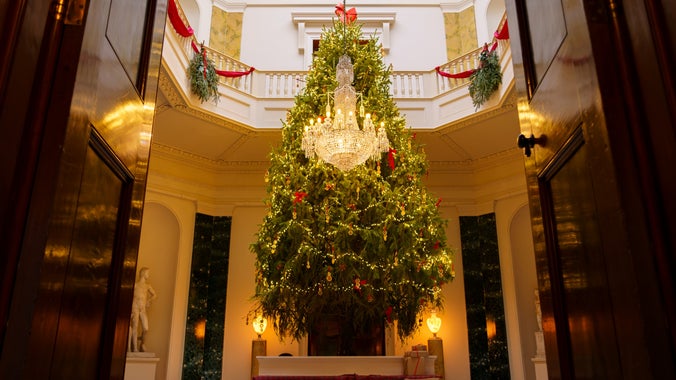
| Asset | Opening time |
|---|---|
| House | 11:00 - 15:00 |
| Formal garden | 10:00 - 16:00 |
| Shop | 10:00 - 15:45 |
| Tea-room | 10:00 - 15:30 |
| Temple of the Winds | Closed |
| Trails | 10:00 - 16:00 |
| Takeaway Kiosk | Closed |
The lift in the mansion house is currently unavailable, please speak to the House team on arrival if you require assistance. House open Thurs to Sun from 3rd Nov 2025 until 15th March 2026 - exceptions apply w/c 22nd Dec 2025. Off peak prices available Monday to Wednesday during seasonal house closure periods in Jan-March and Nov-Jan, or if the House is closed to the public.
| Ticket type | With Gift Aid | Without Gift Aid |
|---|---|---|
| Adult (18+) | £16.50 | £15.00 |
| Child (5-17) under 5s free | £8.30 | £7.50 |
| Family (2 Adults and up to 3 children) | £41.30 | £37.50 |
| 1 adult, 2 children | £24.80 | £22.50 |
| Group (Adult 18+) | £14.25 | |
| Group (Child 5-17) | £7.13 |
| Ticket type | With Gift Aid | Without Gift Aid |
|---|---|---|
| Adult (18+) | £13.20 | £12.00 |
| Child (5-17) under 5s free | £6.60 | £6.00 |
| Family (2 Adults and up to 3 children) | £33.00 | £30.00 |
| 1 adult, 2 children | £19.80 | £18.00 |
Assistance dogs only in house & indoor area of tea room.
There is a second-hand bookshop located in Visitor Reception adjacent to the shop. Donations of books welcome.
We have 2 car parks available at Mount Stewart. Car Park 1 is located nearer to the house and gardens and Car Park 2 is nearer our trails. Both car parks are hard-standing, however, on busy day you may be required to park in our overflow field. There are accessible parking spaces in Car Park 1.
Dogs on leads permitted across the estate and there is an off-lead dog exercise area located next to our Shepherd's Hut. This is for Members and paying visitors and we ask that all dogs using this area are well behaved with good recall.
There are a selection of plants available for sale from our courtyard areas. These plants are grown at our very own nursery in the grounds of Mount Stewart.
Gift shop selling gifts, homewares and local crafts. Open 7 days a week for National Trust members and paying visitors.
Our tea room is open 7 days a week for takeaway and sit in dining for National Trust members and paying visitors.
We have a number of toilets available across the site. These are located in Car Park 1, Courtyard, Visitor Reception and adjacent to Temple of the Winds. Each location has baby-changing and accessible toilet facilities. There is a Changing Places facility to the rear of the toilet block in Car Park 1, accessed using RADAR key (available from Reception).
Accessible lake walk and areas of gardens. Some uneven and steep routes on trails. Accessible toilets. Mobility scooters available. Ground floor of house accessible.
Accessible route map are available at Visitor Reception.
There are accessible toilet facilities located in Car Park 1, Courtyard, Visitor Reception and adjacent to Temple of the Winds. There is a Changing Places facility to the rear of the toilet block in Car Park 1, accessed using RADAR key (available from Visitor Reception if required).
There is a braille version of the property leaflet available at Visitor Reception.
There is a changing Places facility available to the rear of the toilet block in Car Park 1. This is accessed using RADAR key (available from Visitor Reception if required).
There is designated Blue Badge and family parking spaces located to the top to Car Park one as well as additional accessible spaces to the rear of the Courtyard. There are 2 wider accessible spaces located ant the entry to Car Park 2.
There is a coach drop off point in Car Park 1 and visitors can drop off at the rear of the Courtyard if required.
There are induction loops in Visitor Reception, Tea Room and Shop.
Large print menus and property leaflets available.
There is level access to our Tea Room and Kiosk.
There is level access to the shop.
The majority of our walks are accessible to wheelchairs and buggies, however, some of our trails are not suitable for wheelchair access. The lake walk and formal gardens are accessible.
There is a lift available in the house for access to the upper floor. (Currently out of order)
Some corridors in the house are narrow, however, alternative routes are available if required.
We have 2 powered mobility scooters available for visitors to use which may be booking by contacting our visitor reception team.
There is ramped access to our exhibition space.
There is seating available across the site and seating has been provided in each room of the house.
There are steps and uneven terrain across some areas of our formal gardens.
We have a range of outdoor wheelchairs available to book which are suitable for use across the site. There are also indoor wheelchairs available for visitors to the house.
Find out whats on at Mount Stewart and plan your next adventure!

This winter, add a sprinkle of seasonal magic with a visit to Mount Stewart. This Christmas season, join us for a festive children's trail, seasonal storytelling, family activities in the big house, wellness and gift-making workshops, twinkly lights and Christmassy musical performances.
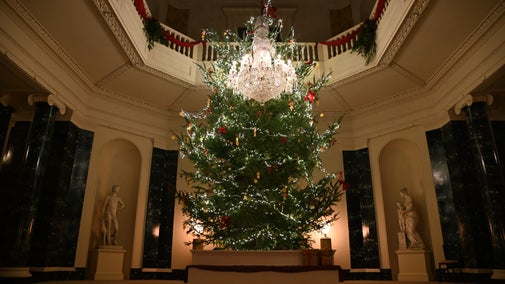
Find out everything you need to know about visiting Mount Stewart with kids. From exploring the Natural Play area to discovering the squirrel hide as well as essential information on where you'll find baby-changing facilities, places to picnic and more.

Pull on your walking boots, choose your route and head out for a walk on the Mount Stewart estate. Spot seasonal wildlife as you go, or run wild in the natural play area.

Explore the historic house and wander through the elegant rooms to discover a much-loved family home, filled with magnificent portraits and personal treasures.
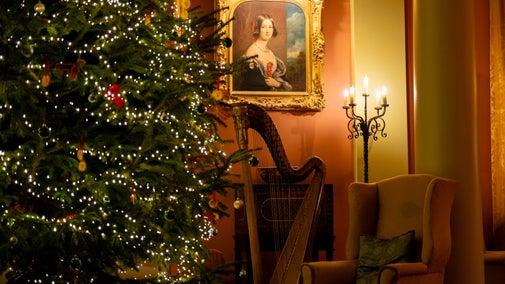
Take a stroll through the world-class garden at Mount Stewart and discover an extraordinary scope of plant collections and original, historic features.

Find more about bringing your school or youth group for self-led or fully facilitated experiences at the children and young people hub. Find out how to book.

Nineteenth-century mansion house, home to a world-class collection of paintings and many other internationally-significant items.
Considered one of the most outstanding gardens in the world, comprised of a number of individual and unique gardens.
Is home to ten miles of walking trails, through a landscape of woodlands & mixed farmland. No cycling/electric scooters (balance bikes & stabiliser bikes permitted)
The natural play area is themed around the journeys, adventures and creatures found in the book, The Magic Inkpot.
View red squirrels, pine martens, badgers and a variety of birds feeding and playing, at the Squirrel Hide.
Gift shop selling gifts, homewares and local crafts. There's also a second-hand book shop and plant and garden sales.
Sit in or take away drinks and snacks all made on site by our cook and baker. Dogs welcome in covered outdoor area.
The Temple of the Winds is a neo-classical building boasting exceptional views of Strangford Lough from above.
Find out what's on this Autumn

Listen to the Mystery of the Mountstewart Podcast on Radio Ulster. Unravel the mystery as you listen along.

Find out more about the Mountstewart yacht that vanished on Strangford Lough. Learn more about the eight people who died that day including six servants from Mount Stewart.

Explore the historic house and wander through the elegant rooms to discover a much-loved family home, filled with magnificent portraits and personal treasures.

Find out everything you need to know about visiting Mount Stewart with kids. From exploring the Natural Play area to discovering the squirrel hide as well as essential information on where you'll find baby-changing facilities, places to picnic and more.

Pull on your walking boots, choose your route and head out for a walk on the Mount Stewart estate. Spot seasonal wildlife as you go, or run wild in the natural play area.

Take a stroll through the world-class garden at Mount Stewart and discover an extraordinary scope of plant collections and original, historic features.

The house and gardens at Mount Stewart are world famous. Discover more about the history of the Londonderry family and enjoy a day out with your group. We’ll ensure that you have a day to remember.

No matter what time of the year you visit, a walk around the lake at Mount Stewart provides plenty of wonderful photo opportunities.

Explore Mount Stewart's demesne woodlands and farmland on this circular trail with an abundance of wildlife and interesting features to spot along the route.

How many red squirrels can you spot on the trail? A great walk for children and adults alike, around the formal gardens, lake and woodlands of Mount Stewart.

Tuck into a menu of freshly prepared dishes made with local and seasonal produce in the tea-room, and treat yourself or someone special in the gift shop.
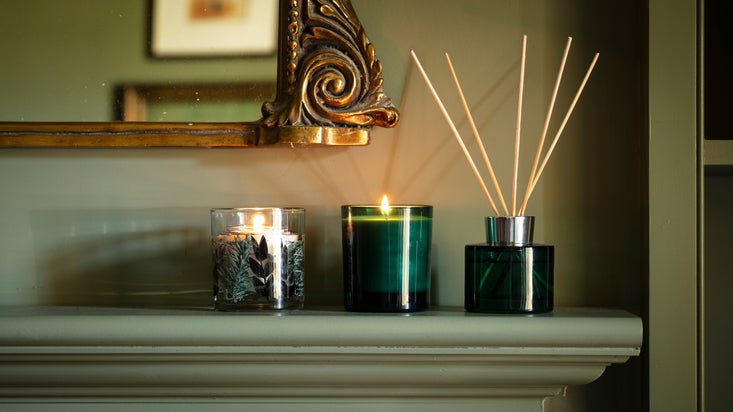
Wrap up warm and set off on a magical winter adventure at Mount Stewart this winter with our festive family trail.
Start your New Year with a guided garden walk, taking in the horticultural highlights of Mount Stewart.
Mount Stewart House
Mount Stewart house has always been a ‘home’ for the Londonderry family, a place that has been touched by the various generations who have loved it. Whilst always respecting the past and finding inspiration from its history, Mount Stewart has been unafraid of change throughout the generations, endeavouring to remain relevant in modern times, the result being that it still retains that feeling of a family home for all who visit with us.
World Class Gardens
The garden at Mount Stewart is unique and of rare quality, being one of the few late compartmentalised Arts and Crafts-like gardens. It is a deeply personal garden, the creation of Edith, Lady Londonderry in the early 20th century building on a pre-existing historic 18th and 19th century landscape. The Strong artistic theme is combined with an unrivalled plant collection which is protected and augmented via our nursery and propagation operation situated in the old walled garden.
Considered to be one of the most outstanding gardens in the world, Mount Stewart is the most visited National Trust mansion house property in Northern Ireland.
Demesne
Mount Stewart is an exceptional example of the Irish demesne, intended to be both beautiful and productive, with woodland, orchards and farmland providing for the needs of the household. The demesne perimeter is clearly defined by an enclosing wall, which marked the private realm of the owner. Acquired by the Stewarts in 1744, woodlands they planted, the estate roads, the bridle paths, follys and farmland remain unchanged. Fine buildings of the Stable Block, Farmyards with Dovecote and Walled garden are architectural gems in their own right.
The wider demesne area was previously inaccessible to visitors, and historically was the realm of the family, their friends, and the house and estate staff, with the woodland in the care of a team of Woodsmen. Today they offer the public a wonderful opportunity to explore a rich landscape of farmed land and woodland walks, with monuments and buildings scattered throughout. Rich in a broad spectrum of recovering wildlife populations, the demesne is one of the last few strongholds of the native Red Squirrel. At the heart of the demesne lies the farmyard complex, along-side which sits the original walled garden, the former engine room of the estate.
Temple of the Winds
Positioned on a rise overlooking Strangford Lough, the octagonal Temple of the Winds is an eighteenth century, grade 1 listed building. Originally built as a banqueting hall and eye-catcher for Robert Stewart in 1786, its design is identical to the Tower of the Winds in Athens. James ‘Athenian’ Stuart (1713-1788) designed the Temple. One of the pioneers of neo-Greek architecture in Europe, he saw sketched and measured the original Greek Tower whilst on tour, recreating it here at Mount Stewart. There are three floors including a vaulted basement that leads to a tunnel that held a wine cellar and scullery.
Home to the Londonderry family for generations, uncover the stories of the people who lived and worked at Mount Stewart

Discover more about the women of Mount Stewart from leading the Women’s Legion, using their influence with Parliament and hosting visits from royalty.

Find out more about the Mountstewart yacht that vanished on Strangford Lough. Learn more about the eight people who died that day including six servants from Mount Stewart.

Discover highlights in the family collection brought together through a generous loan. See works by famous artists that are now on display for the first time in centuries.

Discover how we uncovered the original sandstone floor in Central Hall which dates back to the 1840s, as part of a major restoration project at Mount Stewart.
Discover how our work helps to create space for nature to thrive. From revealing an 800-year-old Norman motte to providing diverse habit for squirrels, barn owls and the native black bee.

What impact is climate change having on the wildlife and habitats of the Mount Stewart estate?

Find out about the Transylvania depicted in Dracula Untold, starring Luke Evans, at places we care for in Northern Ireland.

Find out more about volunteering opportunities at Mount Stewart and the places we care for across East Down.
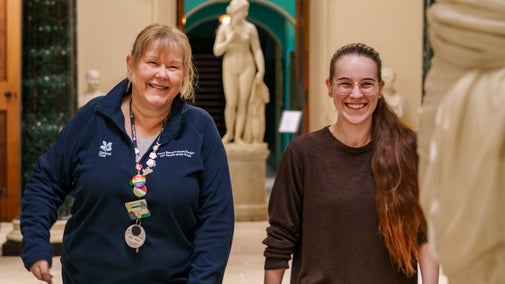
Find out how we’ve been completing important work to restore historic garden spaces. Discover how you can support this work for future generations to enjoy.


Join today and help protect nature, beauty and history – for everyone, for ever. Enjoy access to more than 500 places with National Trust membership.
By sharing your email address you’re agreeing to receive marketing emails from the National Trust and confirm you’re 18 years old or over. Please see our for more information on how we look after your personal data.